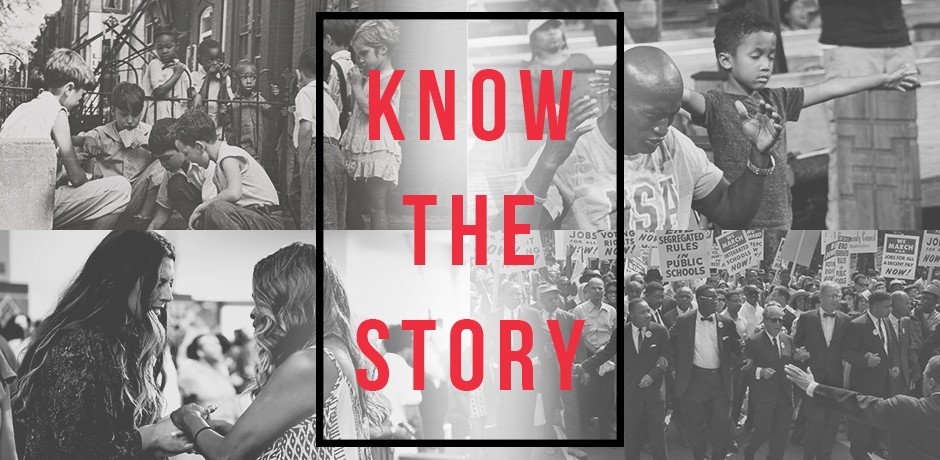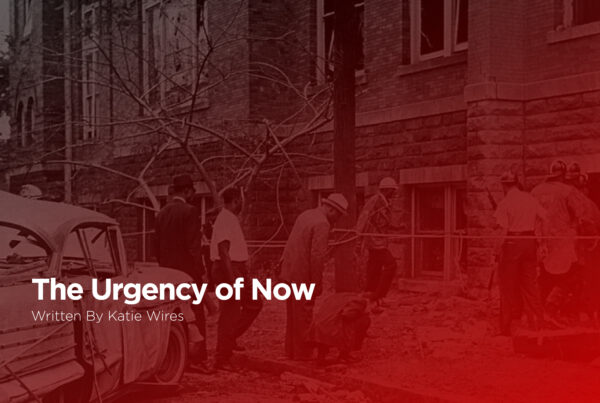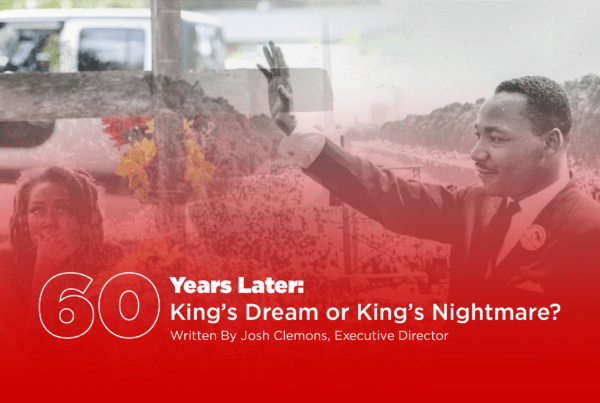Preface
The Lord has taken OneRace and the church in our city on a Journey into His heart on the issues of race this year. The major themes on this Journey have centered on knowing, owning and changing the story for future generations. This is part one of a three-part blog series related to those major themes: know the story, own the story & change the story.
This is Tragic
“As a preacher, I would certainly have to agree with this. I must admit that I have gone through those moments when I was greatly disappointed with the church and what it has done in this period of social change. We must face the fact that in America, the church is still the most segregated major institution in America. At 11:00 on Sunday morning when we stand and sing and Christ has no east or west, we stand at the most segregated hour in this nation. This is tragic. Nobody of honesty can overlook this.” – Dr. Martin Luther King, Jr., speaking at Western Michigan University in 1963
This is a moment to give pause and ask ourselves, “Has much changed since this statement was made by Dr. King 56 years ago? Are we different?” I think we can agree, much has changed and there is much to be celebrated. But, is the church still the most-segregated institution? This is tragic.
It’s tragic that this oft-quoted portion of Dr. King isn’t met by the obvious question: How did the 11 o’clock hour on Sunday mornings become segregated in the first place? Or a better question, how did we get here? Whose fault is it? And why is the church still lagging in the conversation on race and culture? It is indeed tragic.
Know The Story
We need to KNOW THE STORY! Know the story of race in America. Know the story of race and the church. We need to know each other’s story.
We need to know the story of the White Lion and that when it docked on the shores of the European colonies in the U.S., it began a dark night that has yet to end.
We need to know the story of the economic implications of men owning men. We need to know the heartlessness of saying, “pull yourself up by your bootstraps,” to a bootless man.
We need to lean into one another and seek to understand with sincerity, HOW WE GOT HERE.
Know the Story Disclaimer
It must be said that this is not a comprehensive review of the history of America and the church. The goal herein is to provide a broad overview. To create a framework to answer the question, “How did we get here?” Additionally, this work focuses primarily on the African/African American experience, as it is the 400-year anniversary of African-slavery in the colonies/US. This is not to ignore or to make small of other ethnic experiences. We are simply using this narrative as an on-ramp for the conversation on reconciliation and racial unity, and to exemplify its necessity.
Amos 2:6-8
“For three transgressions of Israel,
and for four, I will not revoke the punishment,
because they sell the righteous for silver,
and the needy for a pair of sandals—
7 those who trample the head of the poor into the dust of the earth
and turn aside the way of the afflicted;
a man and his father go in to the same girl,
so that my holy name is profaned;
8 they lay themselves down beside every altar
on garments taken in pledge,
and in the house of their God, they drink
the wine of those who have been fined.”
Know the Story: 400 years of history
In late August of 1619, the manifesto of John Rolfe, most notable for his marriage to Pocahontas, stated: “20 and odd Negros” arrived on the shores of the European colonies aboard the White Lion ship. This began the terror known as the Transatlantic slave trade.
- From August of 1619, until mid-June of 1865, when news of the Emancipation Proclamation reached the south, approximately 12.5 million African image-bearers were traded and subjected to slavery. 246 years of terrorism. 246 years of families being destroyed. 246 years of dehumanization.
- These 246 years of the 400-year narrative is roughly 61% of slave trade/colonial history/American history.
- Following this period, another 100 years (1865-1965) of Reconstruction, 3/5th a man, segregation/separate but equal, and the Civil Rights Movement ensued, amounting to 25% of this 400-year narrative.
- We have only lived with the possibility of equal rights for the last 54 years, a mere 13.5% of this history.
- Perhaps better stated, 86.5% of our collective history is truly steeped in racial terror, division, and pain.
Where is the Church?
Where has the church been along this 400-year journey? Where has the church stood on issues of enslavement and dehumanization? When has the church raised her collective prophetic voice amidst the onslaught of terror? Well, friends, She has been largely silent. The church collectively has been split, rendered ineffective. Though there were several figures who were proponents of racial justice, the church buy-in-large was silent. We must know the story of the church’s complicity with racial terror.
Here is the later part of Dr. King’s statement: “Now that the mistake of the past has been made, I think that the opportunity of the future is to really go out and to transform American society, and where else is there a better place than in the institution that should serve as the moral guardian of the community. The institution that should preach brotherhood and make it a reality within its own body.”






